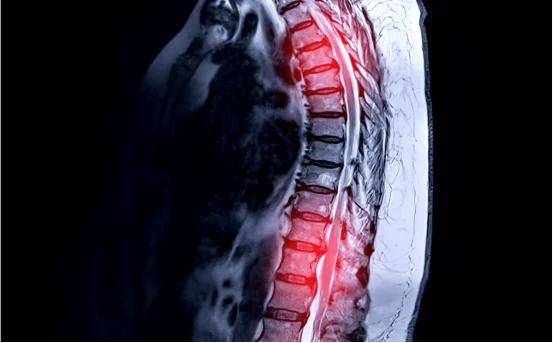Symptoms indicating thalamotomy surgery is a specialized neurosurgical procedure aimed at relieving symptoms of certain neurological disorders by targeting a specific part of the brain called the thalamus. Most commonly used to treat tremors and other movement disorders, thalamotomy is often recommended when other forms of treatment like medication or non-invasive therapies fail to provide adequate relief. Understanding the symptoms that may indicate the need for thalamotomy can help patients and caregivers seek timely intervention and improve quality of life.
For individuals suffering from conditions like essential tremor, Parkinson’s disease, or multiple sclerosis-related tremors, daily life can become a constant struggle. Simple tasks such as drinking from a cup, writing a note, or buttoning a shirt can become difficult or impossible due to uncontrollable shaking. In many cases, medications that are typically prescribed for these conditions lose their effectiveness over time, or cause unwanted side effects. This is where surgical options like thalamotomy come into play.
What is Thalamotomy?
Thalamotomy is a neurosurgical procedure that involves creating a precise lesion (small area of damage) in a part of the thalamus. The thalamus is a relay center in the brain responsible for transmitting motor and sensory signals. In certain movement disorders, abnormal electrical activity in the thalamus can result in uncontrollable movements or tremors.
The goal of thalamotomy is to disrupt these abnormal signals by removing or destroying the overactive part of the thalamus. This surgery can be performed using traditional surgical techniques or newer, less invasive methods like MRI-guided focused ultrasound or radiofrequency ablation.
Common Conditions Treated with Thalamotomy
Thalamotomy is most frequently used to treat the following neurological conditions :-
-
Essential Tremor
-
Parkinson’s Disease (Tremor-dominant)
-
Multiple Sclerosis (tremor control)
-
Dystonia (in select cases)
While it is not a cure for these diseases, thalamotomy can significantly improve quality of life by reducing symptoms.
Key Symptoms Indicating Thalamotomy Surgery
Not every patient with a movement disorder is a candidate for thalamotomy. However, when symptoms become debilitating and are no longer responsive to medication, this surgery may be considered. Below are the most telling symptoms that might suggest the need for thalamotomy:
The symptoms indicating thalamotomy surgery can vary from patient to patient, but they typically include persistent, drug-resistant tremors, which are crucial in the decision-making process.
Persistent, Drug-Resistant Tremors
One of the hallmark signs for thalamotomy consideration is tremor that doesn’t respond to medication. This is common in both essential tremor and Parkinson’s disease. If tremors in the hands, arms, or head remain severe even after trying multiple drugs like beta-blockers, anticonvulsants, or dopamine agonists, surgical intervention might be necessary.
Recognizing the symptoms indicating thalamotomy surgery early can lead to timely interventions that significantly enhance quality of life.
Persistent tremors can interfere with everyday tasks such as writing, eating, or dressing—prompting neurologists to recommend thalamotomy to restore motor control.
Unilateral Tremor or Symptoms Affecting One Side of the Body
Patients experiencing these symptoms indicating thalamotomy surgery should consult their neurologist about the best treatment options available.
Thalamotomy is often most effective for unilateral symptoms those affecting just one side of the body. If a patient experiences significant tremors, rigidity, or abnormal movements in only the left or right hand, thalamotomy targeting the opposite side of the brain may provide excellent relief.
This makes it particularly useful in early-stage Parkinson’s or essential tremor when symptoms are localized and haven’t yet spread.
Loss of Independence Due to Motor Dysfunction
When tremors or involuntary movements start to impair basic functions like eating, writing, using tools, or dressing, and medications no longer help, thalamotomy may offer a path to regaining independence.
Addressing these critical symptoms indicating thalamotomy surgery can help restore a patient’s independence and improve daily functioning.
Patients often report frustration and emotional stress due to the inability to perform simple daily activities. Surgery in such cases can drastically improve functionality and mental well-being.
Side Effects or Complications from Medications
Understanding the symptoms indicating thalamotomy surgery is essential for both patients and healthcare providers.
Long-term use of medications like levodopa or primidone can cause side effects such as nausea, hallucinations, drowsiness, or levodopa-induced dyskinesias. When patients cannot tolerate medications due to these side effects, and symptoms remain unmanaged, thalamotomy offers a viable alternative.
It allows patients to reduce or eliminate their dependency on high-dose medications and still maintain symptom control.
Severe Head or Voice Tremors
In certain cases of essential tremor, patients experience tremors of the head or voice, which are particularly hard to treat with drugs. These tremors can be socially distressing and may lead to isolation or embarrassment.
Thalamotomy, particularly using MRI-guided focused ultrasound, has shown promising results in controlling such tremors and restoring patients’ confidence and social engagement.
Non-Responsive Dystonia or Complex Tremor Syndromes
The decision to proceed with surgery often hinges on the clear identification of the symptoms indicating thalamotomy surgery.
For rare cases involving dystonia or complex tremor syndromes unresponsive to conventional treatment, thalamotomy might be an option especially when deep brain stimulation (DBS) is not feasible due to medical or anatomical reasons.
In these cases, detailed neurological evaluation is required to assess the potential benefit and risks of the surgery.
Diagnostic and Pre-Surgical Evaluation
Before deciding on thalamotomy, a comprehensive assessment is essential. This includes :-
-
Neurological Examination :- To document the severity, type, and pattern of tremor or involuntary movement.
-
Imaging Studies :- MRI or CT scans to visualize the thalamus and rule out other causes of symptoms.
In some cases, patients may only become aware of the symptoms indicating thalamotomy surgery after consulting with specialists.
-
Medication Trials :- To determine if symptoms can be controlled pharmacologically.
-
Functional Impact Assessment :- Evaluating how symptoms affect quality of life and daily functioning.
Patients should keep a record of their symptoms indicating thalamotomy surgery to discuss during medical appointments.
If all non-surgical treatments fail and the tremor severely impacts life, a neurosurgeon may recommend thalamotomy.
What to Expect During and After Thalamotomy?
Considering the symptoms indicating thalamotomy surgery can lead to better patient outcomes when managed appropriately.
Surgical Procedure
Depending on the approach, thalamotomy can be done using :-
-
Radiofrequency Ablation (RFA)
-
Stereotactic Laser Ablation
-
MRI-Guided Focused Ultrasound (MRgFUS)
These procedures are typically done under local anesthesia, with the patient awake to monitor symptom response during the operation.
Ultimately, recognizing the symptoms indicating thalamotomy surgery will guide the treatment plan and improve the quality of life.
Recovery
Most patients can go home within 24–48 hours of the procedure. Recovery time is short, and improvements in tremor can often be seen immediately or within a few days.
For many individuals, the surgery can alleviate the burdens caused by the symptoms indicating thalamotomy surgery.
Some side effects may include :-
-
Temporary numbness or weakness
Long-term recovery can also be influenced by the severity of the symptoms indicating thalamotomy surgery before the procedure.
-
Speech difficulties
-
Balance problems
These are generally mild and improve with time.
Who Should Not Undergo Thalamotomy?
It is important to thoroughly assess the symptoms indicating thalamotomy surgery to determine the best approach.
Thalamotomy is not suitable for :-
-
Patients with bilateral symptoms requiring intervention on both sides (due to high risk of speech and cognitive complications)
-
Those with severe cognitive impairment
-
Patients with unmanageable psychiatric conditions
-
Individuals unfit for surgery due to other health issues
In such cases, alternatives like deep brain stimulation (DBS) may be recommended instead.
Thorough evaluation of the symptoms indicating thalamotomy surgery can prevent unnecessary complications during treatment.
Conclusion
Thalamotomy is a highly effective surgical option for individuals suffering from drug-resistant tremors and other debilitating movement symptoms. While not a first-line treatment, it becomes a life-changing solution for many when medications fail.
In conclusion, recognizing and understanding the symptoms indicating thalamotomy surgery can be life-changing for many patients.























